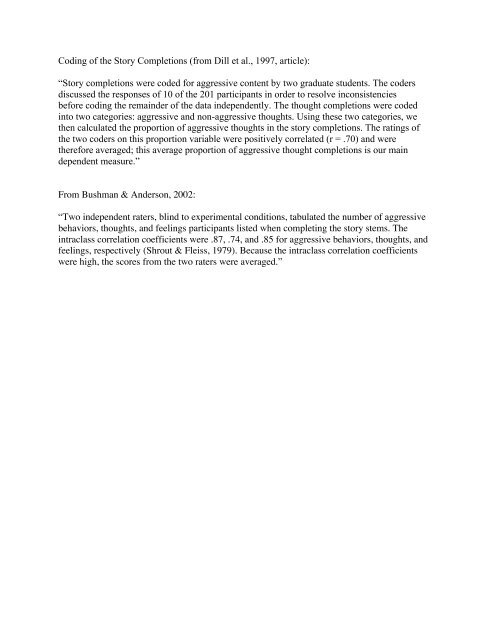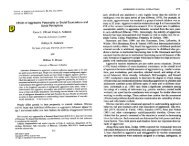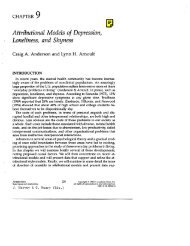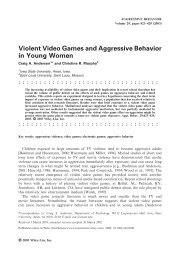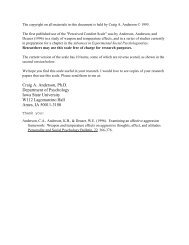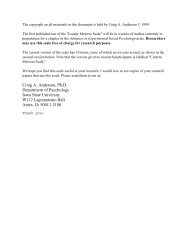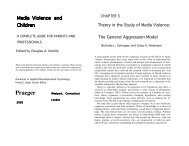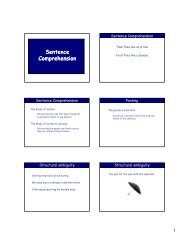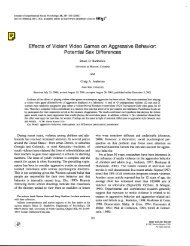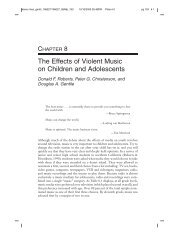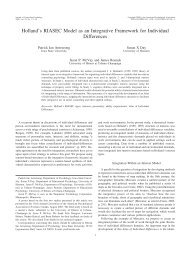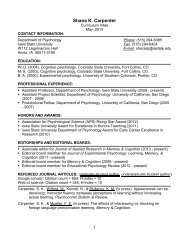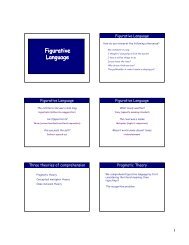Story Completion Task (Projective Priming) We have used this task ...
Story Completion Task (Projective Priming) We have used this task ...
Story Completion Task (Projective Priming) We have used this task ...
Create successful ePaper yourself
Turn your PDF publications into a flip-book with our unique Google optimized e-Paper software.
Coding of the <strong>Story</strong> <strong>Completion</strong>s (from Dill et al., 1997, article):<br />
“<strong>Story</strong> completions were coded for aggressive content by two graduate students. The coders<br />
discussed the responses of 10 of the 201 participants in order to resolve inconsistencies<br />
before coding the remainder of the data independently. The thought completions were coded<br />
into two categories: aggressive and non-aggressive thoughts. Using these two categories, we<br />
then calculated the proportion of aggressive thoughts in the story completions. The ratings of<br />
the two coders on <strong>this</strong> proportion variable were positively correlated (r = .70) and were<br />
therefore averaged; <strong>this</strong> average proportion of aggressive thought completions is our main<br />
dependent measure.”<br />
From Bushman & Anderson, 2002:<br />
“Two independent raters, blind to experimental conditions, tabulated the number of aggressive<br />
behaviors, thoughts, and feelings participants listed when completing the story stems. The<br />
intraclass correlation coefficients were .87, .74, and .85 for aggressive behaviors, thoughts, and<br />
feelings, respectively (Shrout & Fleiss, 1979). Because the intraclass correlation coefficients<br />
were high, the scores from the two raters were averaged.”


